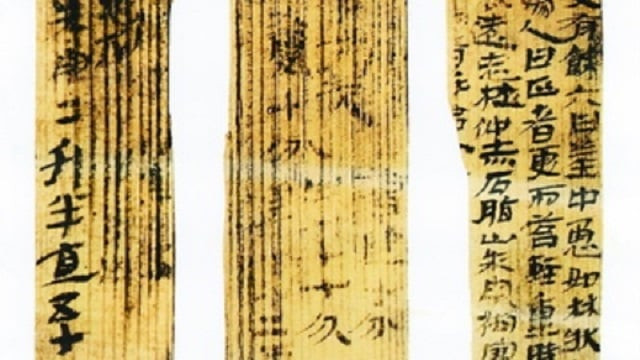Oracle bone inscriptions reveal ancient knowledge about diseases
Oracle bone inscriptions are an ancient Chinese language named for inscriptions on tortoise shells and animal bones

Oracle bone inscriptions are an ancient Chinese language named for inscriptions on tortoise shells and animal bones. PHOTO: XINHUA
During the Shang Dynasty (1600 BC-1046 BC), when epidemics were rampant, people resorted to witchcraft or offered sacrifices to ward off evil spirits, and officials used governmental measures to prevent disease transmission, said Song Zhenhao, an expert on ancient oracle bone inscriptions from the Chinese Academy of Social Sciences.
Oracle bone inscriptions, or Jiaguwen, are an ancient Chinese language named for their inscriptions on tortoise shells and animal bones. They are a primitive form of Chinese characters and the oldest fully-developed characters in China.
Some traditional ways to fight viruses took shape in ancient China, Song said.
For example, an ox bone was found in a Shang Dynasty ruins site in the city of Anyang, in central China's Henan Province. On the bone were several ancient inscriptions, which said that during epidemics, a series of sacrificial ceremonies were held to get rid of the diseases. The inscriptions were believed to be the earliest written records about epidemics in China.
According to Song, so far, more than 50 diseases have been recorded in excavated inscriptions on bones and shells in China.
'Italy has abandoned us': Brother trapped with sister's body in coronavirus shutdown
"These diseases have a very detailed explanation, which shows the Shang people were in awe of the diseases," Song said.
From the specific wording of the inscriptions, Song concluded that "medical science had reached a high level" at that time.
"People already knew about epidemics and disease transmission among people more than 3,000 years ago," Song said.
The inscriptions also recorded measures to fight against epidemics, including acupuncture, moxibustion and quarantine, in addition to numerology and offering sacrifices, in addition to acupuncture, moxibustion and quarantine.
"Some of these inscriptions also wrote about quarantine measures, which means people were proactively doing something to stay away from epidemics," Song said. "There were also measures against rumour mongering to maintain stability."



















COMMENTS
Comments are moderated and generally will be posted if they are on-topic and not abusive.
For more information, please see our Comments FAQ